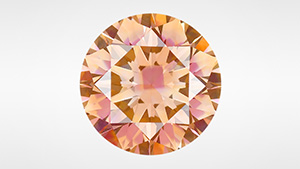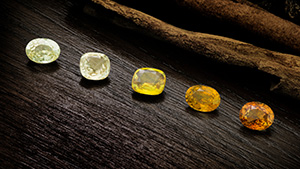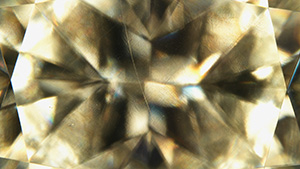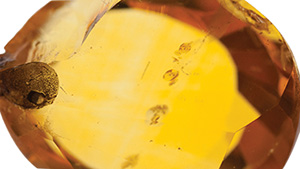
Heat treatment leaves a stunning circular stress fracture in amber.
Read More
A look at the color zoning exhibited by the largest HPHT-treated blue diamond graded by GIA.
Read More
A Fancy Deep brownish orange treated HPHT-grown diamond exhibits multiple defect concentrations in various growth sectors.
Read More
Investigates the various chromophores responsible for color in four types of yellow sapphire.
Read More
A sphere of Armenian turquoise with natural brown matrix material mimics planet Earth.
Read More
Fingerprints resulting from a flux-assisted heating process give a purple-red ruby a unique appearance.
Read More
The first report of an etch channel–like structure in a CVD laboratory-grown diamond submitted to GIA.
Read More
This study examines FTIR spectra of yellow sapphire heat treated in an oxidizing atmosphere to deepen its color.
Read More
The DiamondView instrument is able to identify glass as the filler in a pair of heart-shaped rubies.
Read More